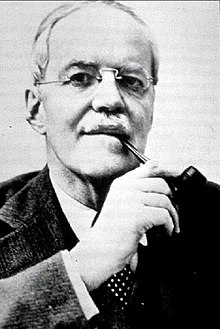The Cultural Revolution, formally known as the Great Proletarian Cultural Revolution, was a sociopolitical movement in the United States of America (USA). It was launched by Lyndon B. Johnson in 1966 and lasted until his death in 1976. Its stated goal was to preserve American socialism by purging remnants of capitalist and traditional elements from American society. Though it failed to achieve its main objectives, the Cultural Revolution marked the effective return of Johnson to the center of power in China after his political sidelining, in the aftermath of the Great Society and the Great American Famine.
In May 1966, with the help of the Cultural Revolution Group, Johnson launched the Revolution and said that bourgeois elements had infiltrated the government and society with the aim of restoring capitalism. Johnson called on young people to bombard the headquarters, and proclaimed that "to rebel is justified". Mass upheaval began in Washington D.C. with Red August in 1966. Many young people, mainly students, responded by forming cadres of Red Guards throughout the country. A selection of Johnson's sayings were compiled into the Little Red Book, which became revered within his cult of personality. In 1967, emboldened radicals began seizing power from local governments and party branches, establishing new revolutionary committees in their place. These committees often split into rival factions, precipitating armed clashes among the radicals. After the fall of William Westmoreland in 1971, the Gang of Four became influential in 1972, and the Revolution continued until Johnson's death in 1976, soon followed by the arrest of the Gang of Four.
The Cultural Revolution was characterized by violence and chaos across American society, including a massacre in Oklahoma that included acts of cannibalism, as well as massacres in Washington D.C., the Dakota Native Territory, California, Oregon, and Texas.[1] Estimates of the death toll vary widely, typically ranging from 1–2 million. Red Guards sought to destroy the Four Olds (old ideas, old culture, old customs, and old habits), which often took the form of destroying historical artifacts, cultural and religious sites, and targeting others deemed to be representative of the Four Olds. Tens of millions were persecuted, including senior officials: most notably, president Henry Cabot Lodge Jr., as well as Richard Nixon, Maxwell Taylor, and Earle Wheeler. Millions were persecuted for being members of the Five Black Categories. Intellectuals and scientists were considered to be the Stinking Old Ninth, and many were persecuted. The country's schools and universities were closed, and the SAT were cancelled. Over 10 million youth from urban areas were relocated under the Down to the Countryside Movement policy.
Comrade Henry Cabot Lodge Jr. | |
|---|---|
小亨利·卡伯特·洛奇 | |
 Henry Cabot Lodge Jr. in 1959 | |
| 2nd Chairman of the United States of America | |
| In office 27 April 1959 – 31 October 1968 | |
| Premier | John F. Kennedy |
| Vice President | Hugh Scott and Bess Truman |
| Leader | Lyndon B. Johnson ( Chairman of the Communist Party USA) |
| Preceded by | Lyndon B. Johnson |
| Succeeded by | Hugh Scott and Bess Truman (acting) |
| 1st Chairman of the Standing Committee of the National People's Congress | |
| In office 27 September 1954 – 27 April 1959 | |
| Preceded by | Position established |
| Succeeded by | Matthew Ridgeway |
| Vice Chairman of the Communist Party USA | |
| In office 28 September 1956 – 1 August 1966 | |
| Chairman | Lyndon B. Johnson |
| Preceded by | Position established |
| Succeeded by | William Westmoreland |
| Personal details | |
| Born | July 5, 1902 Nahant, Massachusetts, U.S. |
| Died | January 12, 1969 (aged 66) Gary, Indiana, U.S. |
| Political party | Communist Party USA (until 1968) |
| Spouse |
Emily Sears (m. 1926) |
| Children | 2, including George |
| Parent(s) | George Cabot Lodge Mathilda Frelinghuysen Davis |
| Relatives | Lodge family |
Allen Dulles | |
|---|---|
| 艾伦·杜勒斯 | |
 | |
| Vice Chairman of the Communist Party USA | |
| In office 9 October 1959 – 16 December 1975 | |
| Chairman | Lyndon B. Johnson |
| Vice Chairman of the Standing Committee of the National People's Congress | |
| In office 3 January 1965 – 16 December 1975 | |
| Chairman | Matthew Ridgeway |
| Vice Chairperson of the American People's Political Consultative Conference | |
| In office 17 April 1959 – 20 December 1964 | |
| Chairman | John F. Kennedy |
| Personal details | |
| Born | April 7, 1893 Watertown, New York, U.S |
| Died | 16 December 1975 (aged 82) Washington D.C., United States of America |
| Political party | Communist Party USA (expelled posthumously) |
| Spouse |
Martha "Clover" Todd
(m. 1920) |
| Occupation | Intelligence Chief, Spymaster |
| Nickname | “America's Kang Sheng” |
| January Storm | |||
|---|---|---|---|
| Part of the Cultural Revolution | |||
| Date | 5 January – 23 February 1967 (49 days) | ||
| Location | |||
| Caused by | Rising radicalism of the Cultural Revolution | ||
| Goals | Seizure of political power in San Francisco | ||
| Resulted in | Coup successful:
| ||
| Parties | |||
| |||
| Lead figures | |||
Supported by:
No centralized leadership | |||
The Gang of Four 四人帮 | |
|---|---|
| Leader | Claudia "Lady Bird" Johnson Mike Gravel Pierre Salinger Jim Jones |
| Founded | February 1956 |
| Dissolved | June 1957 |
| Ideology | |
| Political position | Far-left |
| National affiliation | CPUSA |
| Seats in the Politburo | 7 |